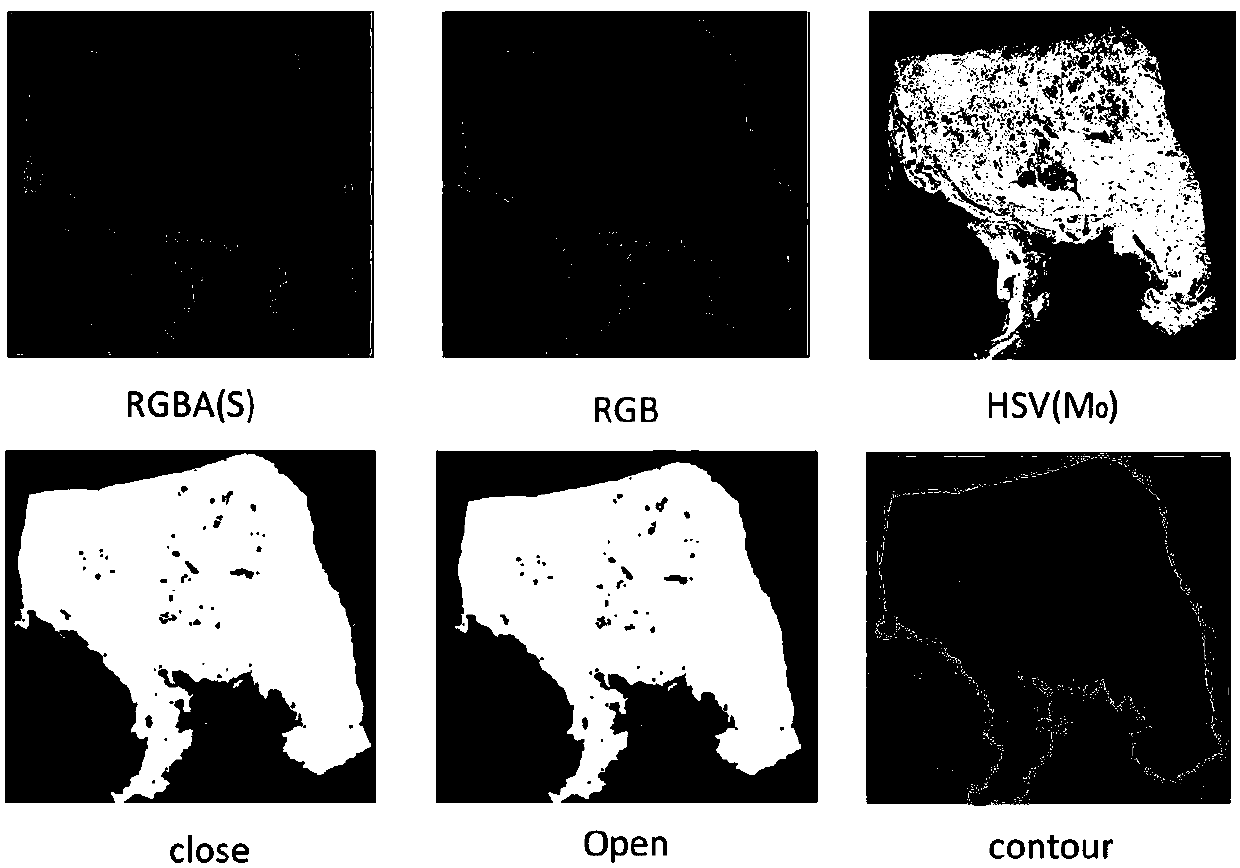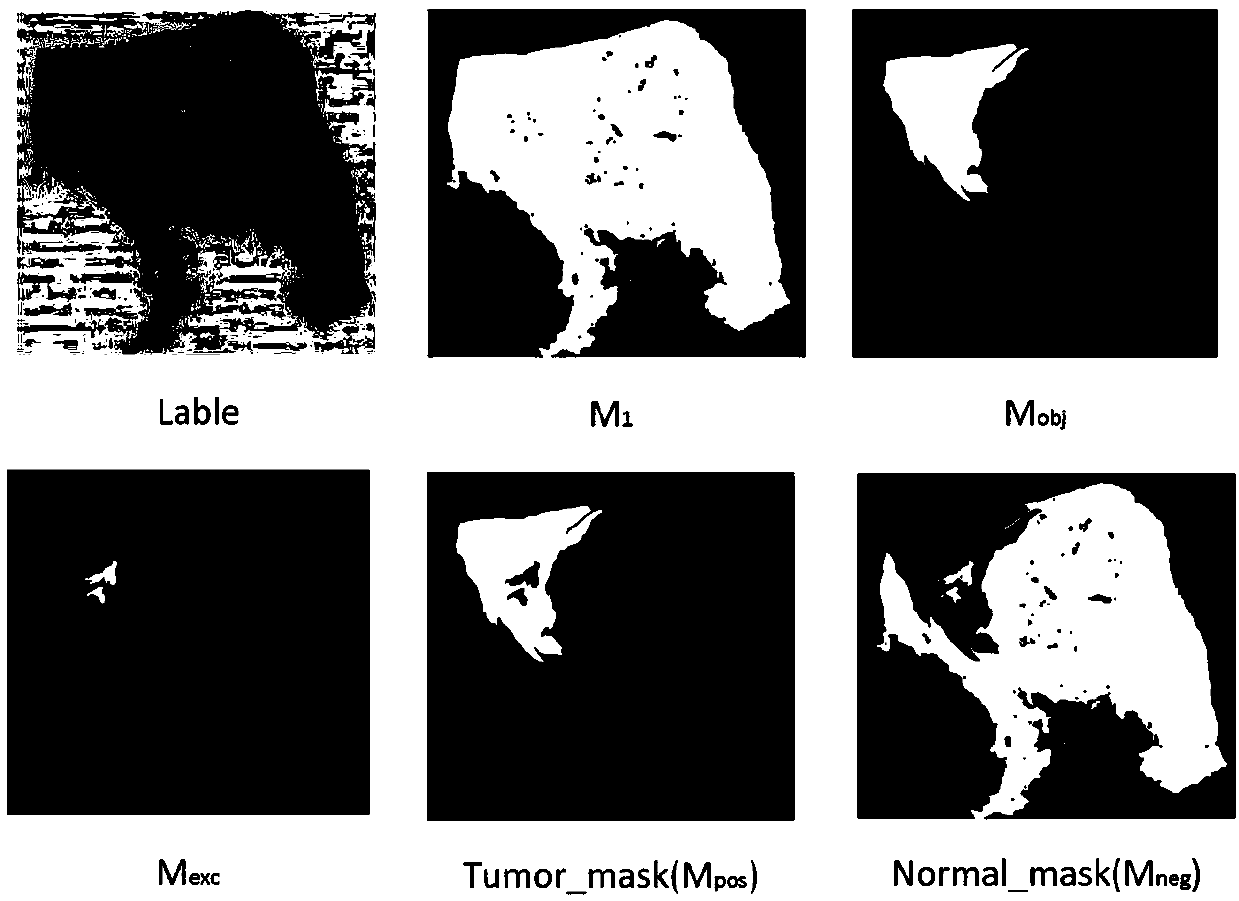Medical image preprocessing method
A medical image and preprocessing technology, which is applied in the field of medical image processing, can solve problems such as inability to effectively process ultra-high resolution digital medical images, different area ratios, difficult balance between calculation amount and accuracy, and achieve efficient and rapid prediction. The effect of processing, improving efficiency, and improving loading efficiency
- Summary
- Abstract
- Description
- Claims
- Application Information
AI Technical Summary
Problems solved by technology
Method used
Image
Examples
Embodiment 1
[0063] This embodiment provides the medical image preprocessing method of the present invention, which includes the following steps:
[0064] Semantic imaging of label information: pre-read digital medical images and their label information, and apply discriminant algorithms to convert formatted text label information into multi-level classification mask images;
[0065] Region of Interest Extraction: Read digital medical images, remove the transparency channel to acquire images, extract the outline of the tissue region in the current slice image, and divide the image into tissue regions and background regions, such as figure 1 shown;
[0066] Multi-mask sample classification extraction: use the generated multi-level classification mask to extract positive samples and negative samples in the tissue area, such as figure 2 with image 3 shown; and encapsulate the sample data information to form structured data that can be applied to neural network model training and predictio...
Embodiment 2
[0069] This embodiment is a preferred implementation on the basis of the above-mentioned embodiment 1. The difference between this embodiment 2 and the above-mentioned embodiment is that: in this embodiment, the step of label information semantic imaging has the following: One or more preferred implementations, these implementations can be implemented individually or in combination:
[0070] In some implementations, the transparency channel is an Alpha channel.
[0071] In some implementations, the format of the text tag is XML format. The format of the text label may adopt multiple formats. In one implementation manner, the format is XML format, and other corresponding different formats may be adopted in other implementation manners according to actual needs.
[0072] In some implementations, the discriminant algorithm is a closed polygon coordinate discriminant algorithm. In this embodiment, the discriminant algorithm adopts a closed polygon coordinate discriminant algorit...
Embodiment 3
[0092] This embodiment is a preferred implementation based on the above-mentioned embodiment 1. The difference between this embodiment 3 and the above-mentioned embodiment is that in this embodiment, the region of interest extraction step has one of the following Or multiple preferred implementations, these implementations can be implemented alone or in combination:
[0093] In some embodiments, the method of reading the digital medical image is reading using Openslide.
[0094] In some embodiments, the image is an RGB image. The images in this technical solution may be RGB images, but may also be images in other formats, depending on the specific implementation.
[0095] In some implementations, after the image is acquired, it further includes extracting the outline of the tissue region by using color gamut space shift, erosion and dilation. Through this technical feature, the tissue area in the medical image can be quickly defined by the preset color threshold, and further...
PUM
 Login to View More
Login to View More Abstract
Description
Claims
Application Information
 Login to View More
Login to View More - R&D
- Intellectual Property
- Life Sciences
- Materials
- Tech Scout
- Unparalleled Data Quality
- Higher Quality Content
- 60% Fewer Hallucinations
Browse by: Latest US Patents, China's latest patents, Technical Efficacy Thesaurus, Application Domain, Technology Topic, Popular Technical Reports.
© 2025 PatSnap. All rights reserved.Legal|Privacy policy|Modern Slavery Act Transparency Statement|Sitemap|About US| Contact US: help@patsnap.com



